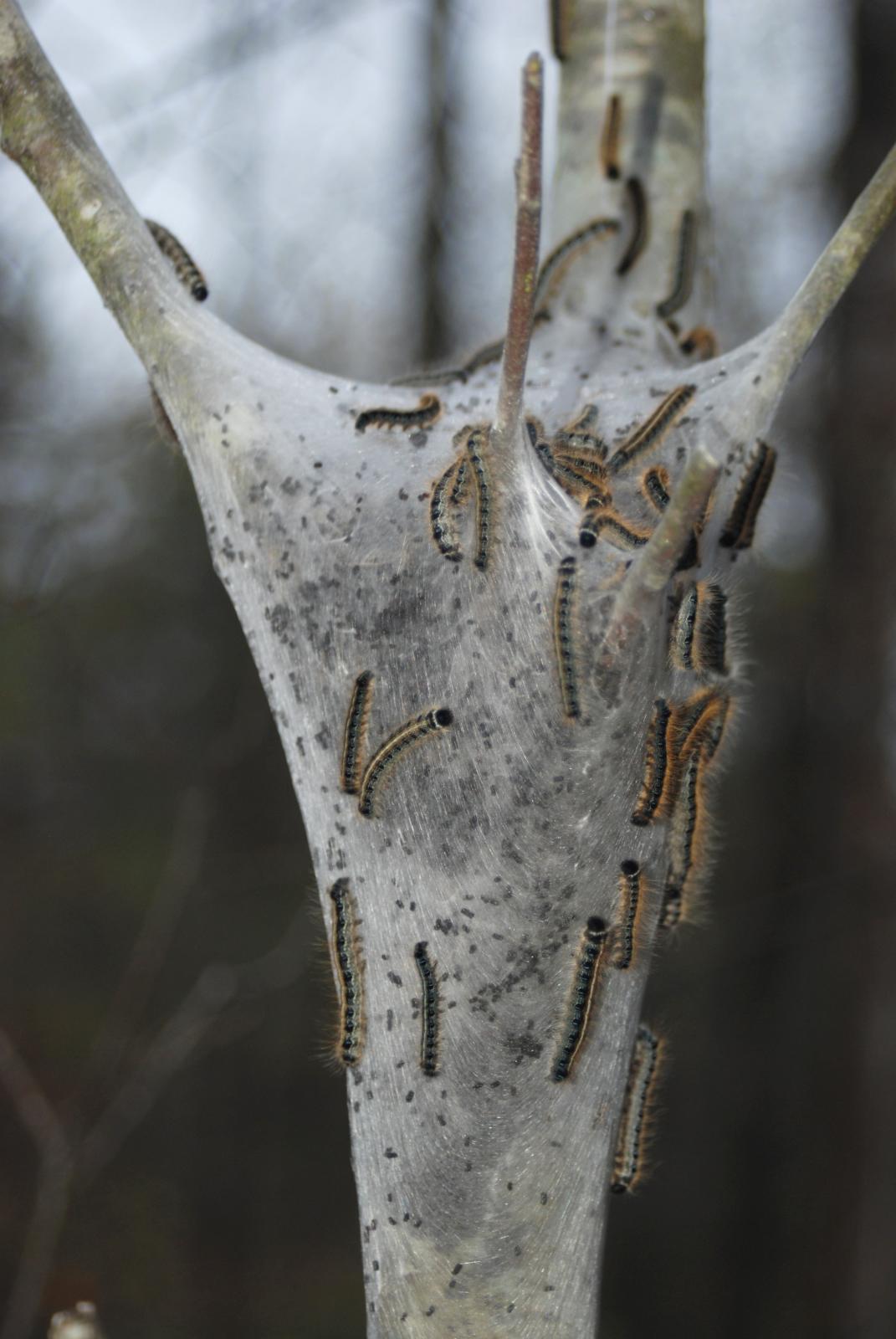

ANIMAL PESTS
Damage caused by these pests is usually not as severe as insect damage. Deer like to browse on deciduous trees and cedars. Dogs may urinate on shrubs causing burning leaves, or they may dig up shrubs. Mice and rabbits will chew the bark off trees in the winter, girdling them so the sap can't rise properly in the spring. Some cures are to put up fencing, put down repellents and use traps to capture and release. Plastic and reinforced Kraft paper tree wraps are easy to use.
INSECT PESTS
Aphid
Aphids are fat, fleshy-bodied green or yellow insects. They cause severe distortion and stunting and are a plant disease vector. They also drop sticky sap called honeydew onto anything below.
Gypsy moth
Gypsy moth larvae are up to 2-1/2-in. long, hairy caterpillars with two rows of red and blue spots down their bock. They are a very serious pest to shade trees, preferring oak, but will move onto others when no oak remains. They can defoliate entire forests.
As larvae hatch, they may cover the entire outside of any object when they are not feeding. It may take a tree several years to recover from a single layer of defoliation. Several successive years of attack means that the tree will die. Evergreens will die after one defoliation if they are attacked. Insecticides should be applied in the spring or early summer before the larvae are one-inch long. It is wise to get professional help, as the entire tree should be covered with insecticide. Homeowners should destroy any yellow egg masses attached to structures in the winter.
Leafminer
Leafminers are insect larvae that feed on the inside of a leaf between the upper and lower surfaces. They can be the larvae of many types of insects. These include flies, sawflies, moths and beetles. Symptoms include blisters or tunnels which turn yellow or brown as the leaf tissue dies.
Mealy bug
Mealy bugs look like fluffy pieces of cotton 1/8-in. to 1/4-in. long. They are usually found on undersides of leaves or more often congregate around the base of the leaves or on stems. Some symptoms are stunting of growth, yellowing, leaf distortion and a sticky sap left on leaves or bark.
Scale
There are many types of scale, most of which have hard or soft shells. One type has a cottony cover similar to mealy bug. Usually, they are found on woody stems but may also be found on the under sides of leaves.
Skeletonizer
Leafbeetle larvae feed on leaves, leaving a mosaic lacy-like pattern of holes with only the veins remaining. The larvae are blackish in colour and the adults are 1/4-in. yellow beetles with black spots. There may also be clusters of yellow eggs on the underside of leaves. There can be up to four generations per growing season and repeated infestations will kill young trees.
Slugs and snails
These creatures are similar to each other except that one has a shell and the other does not. Shiny slime trails and holes in leaves are clues to their presence. They require moisture to survive; therefore they are usually a problem in wet areas. Snails and slugs become dormant when the weather conditions are dry. Their eggs are laid in damp soil under rocks, logs, leaves, etc. Dense ground covers are ideal breeding spots. Slug bait will control them. Wet down areas where you wish to attract them and encircle areas to be treated with bait.
Tent caterpillars
Tent caterpillars, or caterpillars in general, are the larvae of butterflies and moths. They have three sets of actual legs and many pairs of false legs. Mouth parts are used for chewing leaves. These larvae go through many stages, and may start out as small as a leaf miner or skeletonizer until it is large enough to devour entire leaves. Natural control is by birds or environmental conditions. A physical control for tent caterpillars is to cut their nests out of the trees and burn them.
Weevils
This insect has a legless larvae that sits just below the surface of the soil and chews on the roots. The leaves could look stunted, yellow or droop. The leaf margins may droop and curl. The leaf margins and the bark may be chewed on as well. They are 1/4" to 1/2" long. Check the roots for larvae, and check the leaves at night for the adult. It has an elephant-like snout, rows of depressions on its back and is 3/8" long.
Organic controls will also work, search online for recommendations, but Safer's Soap, drenches with tea or nicotine are examples of organic cures. For caterpillars consider BT as a safe alternative. With proper care, your garden will thrive beautifully and the rewards will be many as your healthy plants show their true colours.